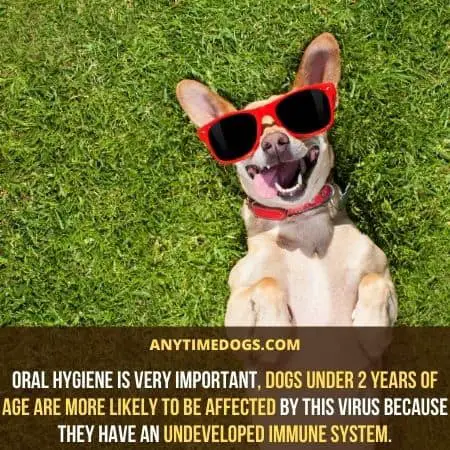Humans and many animals have visible and distinctive lips. As dog owners, many of us wonder Do dogs have lips too? The short answer is Yes! But they are not similar to what we think of human lips.
Now that you have found out that dogs have lips, there can be more questions popping in your mind; Do they smile? Do they kiss? And much more.
Relax! This post is all about dog lips. From what they are called to their structure and function, we are going to reveal all.
Do Dogs Have Lips? Anatomy of a Dog’s Mouth
When you look at your dog’s mouth, it appears to be linked with one continuous boundary. All you observe in a dog’s face is a forehead, droopy ears, a damp nose, a tongue, teeth, and whiskers. But this doesn’t make dogs a lipless species.
Dogs do have lips, but they are pretty different from human lips in not only in look, but also structure, and function.
Lips are an important part of a dog’s anatomy. Their mouths can tell you how they are feeling. Read on to uncover more about dog mouth and lips!
1) What Are Dog Lips Called?
Dogs also have separated upper and lower lip. The lower lip is just called the lower lip like ours. But their upper lips are called “flews”. All dog breeds have different lengths and shapes of flews.
Hunting dogs, heavy-muzzled, giant-drooling breeds have low-hanging flews wrapped over their upper jawline. Bulldogs, Bloodhound, Neapolitan Mastiffs, Newfoundland, Boxer, Spinone Italiano, and Bullmastiff are some among those breeds.

In some other dog breeds, flews along with voluminous facial hair totally conceal a dog’s lower lip. You will have to pull the skin back to find out their lower lip.
A huge difference between a human and dog mouth is found in the cheek area and the jawline. A dog has a relatively longer jawline with a small cheek capacity. Human cheek and lip muscles work in coordination keeping the food and water inside the mouth.
The reason why food and water drip out of your dog’s mouth is due to the less precise cheek-lip combination formed by their tongue and hard palate.
2) Why Dogs Have Bumps on Their Lower Lip?
Thinking about dog lips you may also wonder why dogs have odd bumps on their lower lip or around mouth edges? As dogs have a longer jawline, it is thought that the sharp teeth can pierce through their lip and gum area sometimes while eating.
No matter how much we explore this query, we didn’t get a satisfying answer to this particular “WHY?”
Although, a reliable mention by Auguste Chauveau in The Comparative Anatomy of the Domesticated Animals (1873), states that the dog’s “lower lip is always scalloped on its free border near the commissures.”
We’ll discuss more commissures below!
If you watch your dog eating a bone, you will notice that how the bumpy lips provide grip to the bone and protect the outer layer of their mouth’s skin from getting in while chomping.
Also, make sure not to confuse normal lip bumps with any other unusual clumps called dog pimples which may visible on lips and jowls.
Oral Papilloma Virus in Dogs:
If you see large clusters on your dog’s lips and gums then he may be infected with oral papillomavirus.
This is a very contagious virus that can spread easily from one dog to another or by sharing things. The virus causes small benign tumors that get mature in several parts of the mouth.

Oral hygiene is very important, dogs under 2 years of age are more likely to be affected by this virus because they have an undeveloped immune system.
You must seek a Vet’s advice on time to treat pain and swelling happening to your dog with such clumps.
If you want to learn about tonsillitis in dogs, you can also read this post in your spare time. What is tonsillitis in dogs?
3) Why Dog Lips Are Black?
When it comes to color, melanin is a natural pigment responsible for the color of skin, hair, and eyes in humans as well as in animals.
If you observe closely, you will notice that a dog’s nose and outer lining of its lips are mostly of the same color. Not all dogs have a black nose and lips. Color variations come from the amount of melanin their genetic inheritance makes available to them.
The more melanin, the darker the dog’s nose and lips are. Though, pink and white show a lack of melanin and are not considered as colors.
The most common nose and lip colors from most to least melanin are;
- Black
- Blue (grey)
- Liver brown
- Isabella (dusty grey or brown)
Genetics are variable among all dog breeds, that is why some dogs have spots on their nose and lips. A darker nose and lips provide relatively better protection to dogs from the sun.
4) What Is the Function of Dog Lips?
While we use our lips to munch food and as a sensory organ but, dogs utilize their lips quite differently.
The key function of their lips is to provide constant protection around the jawline and teeth. They also play an important role in expressing body language and to transfer scents to the nose for improved olfaction.
5) Do Dogs Smile?
Commissure in the corner of the mouth where upper and lower lips join. While dogs cannot talk, we can read their state of mind by the commissures just as you can do by their flapping tail or thrilling bark.

There can be two common types of smiles dogs express, joyous or submissive. Don’t assume a dog to be smiling as we do. You can perceive a dog’s smile by wide-open mouth.
A) Joyous Smile:
When a dog is happy or having fun or even play fighting with any other dog, it shows a joyous smile.
In a relaxed and playful smile, the dog’s lips feel to be droopy at the site of commissures. Shiny eyes and lolling tongue are also the supporting signals of their happiness.
B) Submissive Smile:
It closely resembles a growl and is not considered to be a lively smile. When a dog snarls, the front teeth get bared and lips are tightened up at the corners. It is a sign of discomfort, fear, and anxiety.
It is accompanied by shivering, a nervous tail wiggle, and ears resting back. If your dog uses this smile often then something is surely wrong.
6) Do Dogs Kiss?
There are many ways through which pets express love and affection. Cuddles and kisses are on top among them. Dogs don’t have typical human-like lips, so by a kiss, I don’t mean that dogs pucker up. Being licked by a dog is what we refer to as a kiss.
Typically, dogs do not kiss each other or their owners out of love. Similarly, kissing your dog’s mouth to express your love is not a good idea.

Think about the terrible things your dog might have had in his mouth lately. At times, everyone feels guilty about doing it.
It can also cause human and canine respiratory infections (the common cold or kennel cough) and can infect others also.
Do Dogs Have Lips – Final Thoughts:
Dogs do have lips but they are entirely different from human lips in structure and function.
As a pet owner, seeing your pet smile is so gratifying, and being cuddled feels so pure and compassionate.
Though kissing your dog’s lips out of affection is not a good thought for you, but you can definitely read their lips now!

